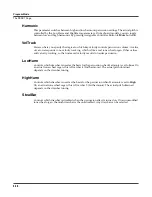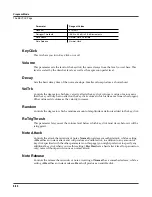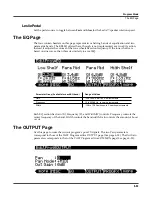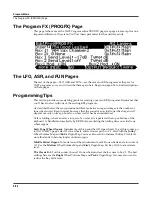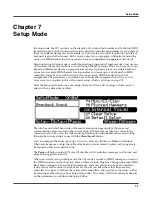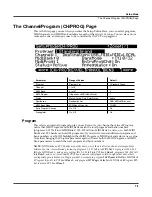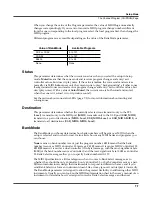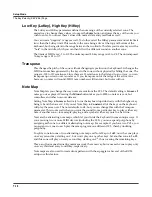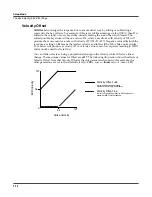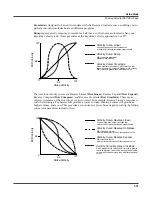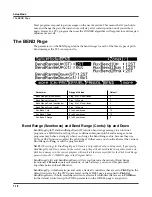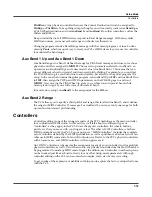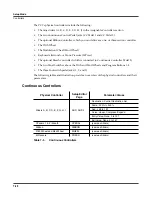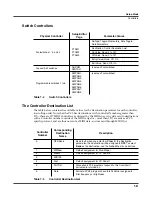
7-6
Setup Mode
The Channel/Program (CH/PROG) Page
Channel
The Channel parameter defines the MIDI transmit channel for the currently selected zone. You
can set it to any of the 16 MIDI channels. Normally, you will want each zone on a separate MIDI
channel. This is necessary if you want to combine different programs in the setup.
If two zones have the same MIDI channel (and destination), but they have different program
settings, there will be conflicts: no MIDI device, including the PC3, can respond correctly to two
different simultaneous Program Change commands on one channel. The result will be that only
one Program Change will be recognized, and every note played will sound double (if Note
Maps are on). This can create odd and unpredictable timing effects, and will reduce your
polyphony by 50%.
Nevertheless, there will be occasions when “stacking” zones on the same MIDI channel might
come in handy. Suppose you want a physical controller on the PC3 to send data for two
different
numbered MIDI Controllers on the
same channel
. In this case, you must create two zones
assigned to the same channel, but with different controller assignments.
Here’s one example: if a receiving synth is using Controller 1 for modulation depth and
Controller #13 for modulation speed, you can increase both the depth and the speed with
Slider A. Start by assigning Slider A in Zone 1 to
MWheel
and in Zone 2 to
MIDI 13
; then assign
both zones to the same MIDI channel. (You may want to make sure you aren’t sending doubled
notes. Use the Note Map parameter on the KEY/VEL page to set one zone’s Note Map to
Linear
and the other zone’s Note Map to
Off
.)
Another example: create two or more zones that are identical except for their transposition
settings. Now you can play parallel intervals (or chords) with single keystrikes.
MidiBank
Before reading this section on MIDI Banks, be sure to read the note in the section
Program
on page 7-5.
The PC3’s programs are divided into 17 MIDI Banks, numbered 0–16. Program 46 in MIDI Bank
3, (which is PC3 bank
Orchestra
), for example, is
430 Lead Oboe
. The MIDI Bank parameter
displays which bank the current program is assigned to, and automatically changes to match the
Program value you set.
You can send Bank Select messages to external MIDI devices as well, by setting the Destination
parameter to a destination including
MIDI
of
USB_MIDI
, then changing MidiBank. Some
instruments may have more than 17 banks. Bank switching via MIDI makes it easy for the PC3
user to select sounds on external instruments, no matter how many banks they might have.
When you change the value of the Program parameter, the value of MidiBank automatically
changes correspondingly. If you want to transmit a MIDI Bank number different from the one
corresponding to the local program, select the local program first, then change the MIDI bank.
If you select an empty bank (like Bank 53), the zone will still produce sound on the PC3,
provided that Destination is set to a destination including
Local
. The Program parameter will
display whatever internal program you set, but the bank number transmitted over the MIDI Out
port will be different from the internal program’s bank number.
MidiProg
MidiProg defines which program number is transmitted out the MIDI Out port on the current
zone’s MIDI channel.
Summary of Contents for PC3
Page 24: ...1 6 Introduction Options ...
Page 50: ...4 4 The Operating Modes Using the Modes ...
Page 174: ...7 54 Setup Mode The Utility Soft Buttons ...
Page 178: ...8 4 Quick Access Mode Making Your Own QA Banks ...
Page 204: ...9 26 Effects Mono Algorithms ...
Page 266: ...A 2 MIDI Implementation Chart ...
Page 308: ...Index x ...



